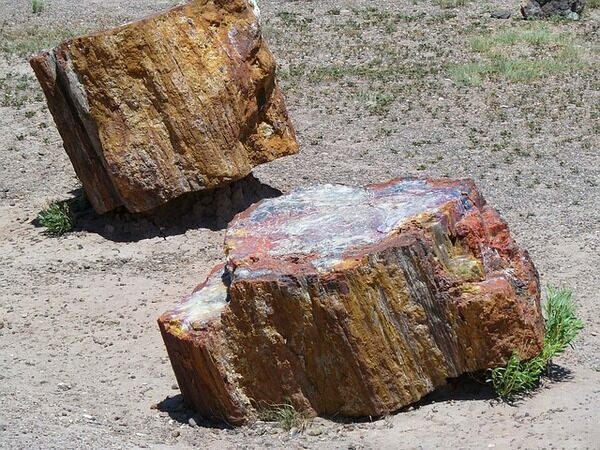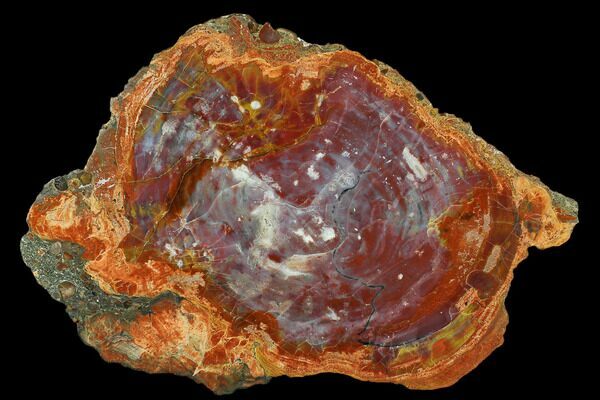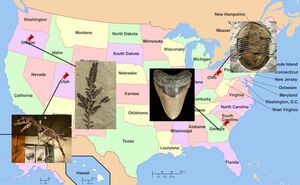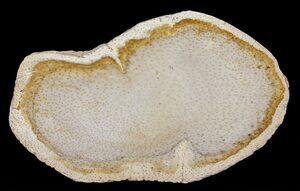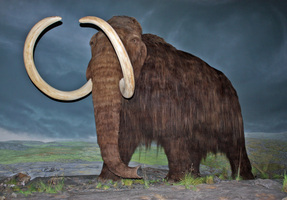Arizona State Fossil - Petrified Wood (Araucarioxylon)
In 1988 the Arizona state legislature designated the petrified wood of Araucarioxylon arizonicum, a prehistoric conifer as the Arizona state fossil. Arizona is well known for its vast petrified forest, part of which lies within the bounds of the Petrified Forest National Park.
During the Late Triassic period, approximately 225 million years ago Northern Arizona had a tropical climate that supported a vast forest conifer trees. The majority of these trees were of the species Araucarioxylon arizonicum, a type of conifer that grew up to 200 feet tall, with a trunk up to 5 feet thick. It likely would have resembled a modern pine tree.
Occasionally fallen trees would become buried in sediment and volcanic ash. Due to the rapid burial and lack of oxygen the wood would not decay as it would if it had remained on the surface. Silica and other minerals dissolved in the ground water absorbed into the porous wood over many years. This caused the cellular structure of the wood to become crystallized and turning it into a fossil.
Much of the Araucarioxylon petrified wood found in Arizona is known for its rainbow coloration with vibrant hues of reds, yellows and purples. While the silica that replaced the original wood is clear other minerals, in particular iron oxides provided the color to the fossilized wood.
Some of the most colorful petrified wood can be seen in the Petrified Forest National Park, which was established is a national monument in 1906 and made into a national park in 1962.
Petrified wood is also the state fossils of North Dakota and Louisiana.
During the Late Triassic period, approximately 225 million years ago Northern Arizona had a tropical climate that supported a vast forest conifer trees. The majority of these trees were of the species Araucarioxylon arizonicum, a type of conifer that grew up to 200 feet tall, with a trunk up to 5 feet thick. It likely would have resembled a modern pine tree.
Occasionally fallen trees would become buried in sediment and volcanic ash. Due to the rapid burial and lack of oxygen the wood would not decay as it would if it had remained on the surface. Silica and other minerals dissolved in the ground water absorbed into the porous wood over many years. This caused the cellular structure of the wood to become crystallized and turning it into a fossil.
Much of the Araucarioxylon petrified wood found in Arizona is known for its rainbow coloration with vibrant hues of reds, yellows and purples. While the silica that replaced the original wood is clear other minerals, in particular iron oxides provided the color to the fossilized wood.
Some of the most colorful petrified wood can be seen in the Petrified Forest National Park, which was established is a national monument in 1906 and made into a national park in 1962.
Petrified wood is also the state fossils of North Dakota and Louisiana.
 Reviews
Reviews
